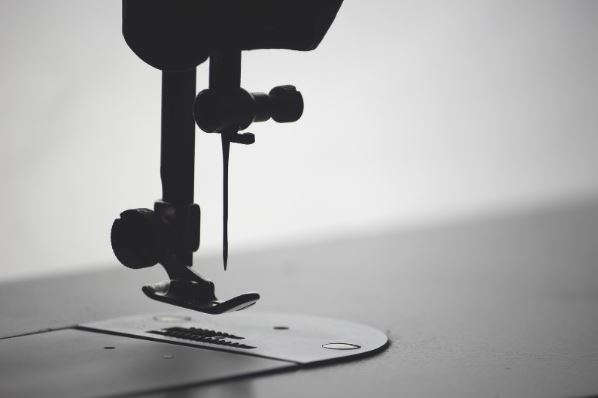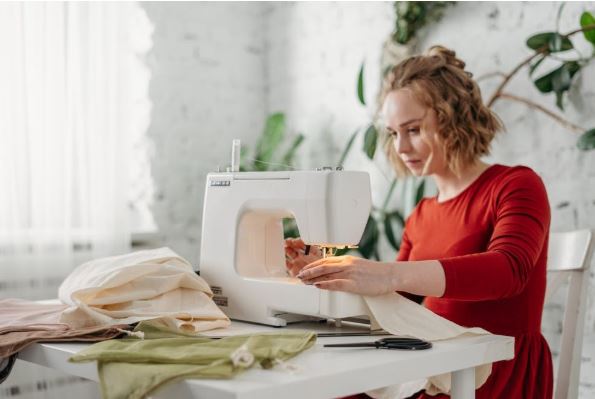 If you’ve inherited or received a sewing machine as a gift, and you have never sewn before you’re probably wondering what you should do with it. Or maybe you’re interested in picking up a new hobby and trying something different for a change. Regardless of how you want to get invested in sewing, it can be a daunting process. If you’re looking to take on a new challenge,Here are a few guidelines to keep in mind when you’re getting ready to tailor items:
If you’ve inherited or received a sewing machine as a gift, and you have never sewn before you’re probably wondering what you should do with it. Or maybe you’re interested in picking up a new hobby and trying something different for a change. Regardless of how you want to get invested in sewing, it can be a daunting process. If you’re looking to take on a new challenge,Here are a few guidelines to keep in mind when you’re getting ready to tailor items:
Choosing A Sewing Machine
One of the major things that you are going to want to do prior to learning how to tailor items is obtaining a sewing machine. Diving into all of the different sewing machine options can seem like an arduous process especially if you’re just dipping your feet into the water. Depending on the amount of tailoring or sewing that you want to do, you can either choose heavy duty options or look for lighter alternatives.
Some sewing machines come with bonus items like scissors or sewing and tailoring guides that can help you jump ahead on the learning curve. This means you won’t have additional expenses obtaining the accessory items.
The Basics
If you have your sewing machine, your accessories, and all the materials on hand, you’re probably wondering where you should start. The first thing you should do is take a deep breath and not get overwhelmed. You might make initial mistakes when you first start sewing but the key is to not get frustrated.
Make sure you pick a time to learn where you can focus and there aren’t excessive noises around you. Threading a sewing machine isn’t particularly difficult, and thankfully the user manual will cover this step by step for you. You might even ask a friend to use their sewing machine to sew to gain a familiarity with the machines.
So make yourself a cup of copy and review the manual in order to make your first steps. Every machine is going to vary on the threading process so it’s difficult to come up with a step by step guide. You’ll also want to get yourself comfortable with options that affect the stitch length, and being able to lower the needle with the lever. Once you are comfortable with all of the settings and being able to thread the needle you can start sewing.
Get A Helping Hand
There are three ways to get a helping hand so that you can start learning how to sew more effectively. The first would be seeking a class within the community on sewing lessons, or groups within the community that meet for sewing.
If you don’t have anyone in your social circle that participates in sewing this is a great way of meeting new people to help you out. If you do have anyone in your social circle that sews, let them know you’ve just started sewing. Often they’ll remember when they first started sewing and be patient in helping you learn, they’ll also be able to give you some tips and tricks.
Early Projects
Before you dive into any masterpieces, you will want to pick up projects that are easier to complete. Straight lines are easier to sew than working on any designs with frills or excessive arrangements. Blankets and pillowcases are easy household items to practice tailoring on, but clothing can be a lot more difficult. Before you take on projects involving pieces of clothing you should probably look up Youtube tutorials, or enlist a helping hand to assist with the project.
Tailoring Clothes
 Prior to tailoring clothes you might want to pick up some tailor’s chalk, and mark down where you want to cut on the clothing. You should sew this together afterwards and see if it fits, prior to making any cuts. Broken seams are relatively easier to repair, but rips and tears may require patches or the creation of a new seam. You’re going to want to be fairly confident about tailoring before working on any of your favorite pieces of clothing.
Prior to tailoring clothes you might want to pick up some tailor’s chalk, and mark down where you want to cut on the clothing. You should sew this together afterwards and see if it fits, prior to making any cuts. Broken seams are relatively easier to repair, but rips and tears may require patches or the creation of a new seam. You’re going to want to be fairly confident about tailoring before working on any of your favorite pieces of clothing.
There you have it folks, some beginning guidelines to follow before you dive into the realm of tailoring. One of the most important factors that I could possibly stress would to not get frustrated no matter what. Becoming frustrated will greatly impact the quality of work you’re able to produce and it will discourage you from furthering learning in your sewing/tailoring work. Be proud of what you’re able to accomplish and take small steps before attempting complex pieces. With a little effort you’ll become a tailoring pro!

